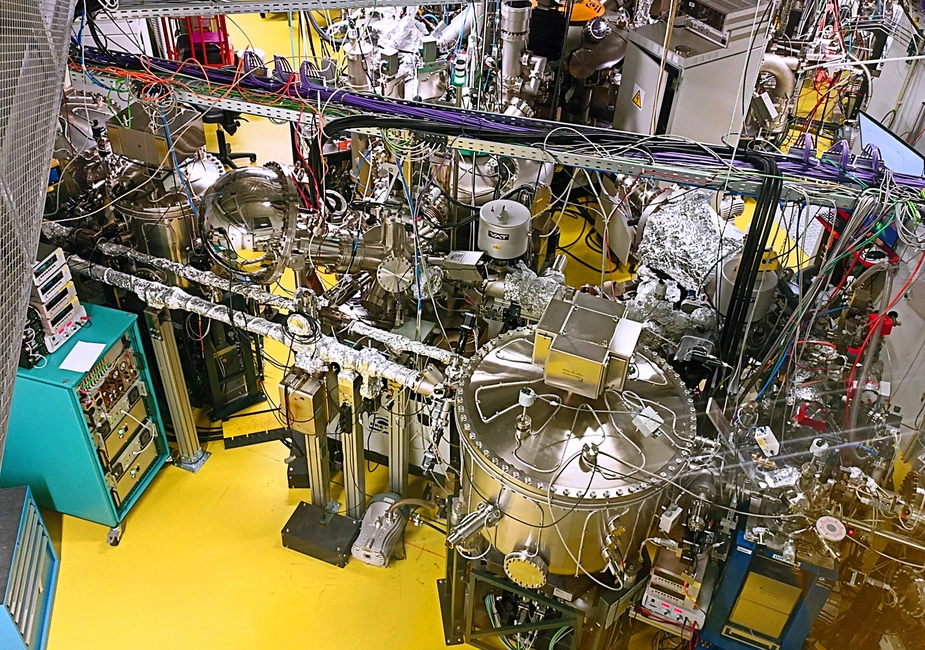New instrument at BESSY II for investigating energy materials
OÆSE endstation in EMIL offers insights into dynamic electrochemical processes
A new instrument is now available at BESSY II for investigating catalyst materials, battery electrodes and other energy devices under operating conditions: the Operando Absorption and Emission Spectroscopy on EMIL (OÆSE) endstation in the Energy Materials In-situ Laboratory Berlin (EMIL). A team led by Raul Garcia-Diez and Marcus Bär showcases the instrument’s capabilities via a proof-of-concept study on electrodeposited copper.
Solar cells, catalysts, and batteries are composed of so-called energy materials, i.e., materials that either convert or store energy. Their functionality is based on complex chemical or physical processes. In order to improve their functionality, it is crucially required to understand those processes, ideally while they are taking place, i.e. by in situ and operando studies. A new experimental station enabling corresponding experiments is now available at the Energy Materials In-situ Laboratory Berlin (EMIL) located at the synchrotron facility BESSY II.
The “Operando Absorption and Emission Spectroscopy on EMIL” (OÆSE) provides detailed insights into the electronic and chemical structures of materials and interfaces and their changes during critical (electro)chemical processes via X-ray absorption (XAS) and emission (XES) spectroscopy .
At the heart of the OÆSE endstation is a modular and flexible in situ/operando sample environment, specially tailored to tackle the specific research questions required for each energy material, which design ensures easy adaptation to different experiments.
To demonstrate the capabilities of the OÆSE endstation, the team led by Raul Garcia-Diez and Marcus Bär studied in situ the electrochemical deposition of copper from an aqueous CuSO4 electrolyte using combined soft and hard X-ray absorption spectroscopy exploiting the two-color beamline of EMIL. The case study shows that the new endstation offers valuable insights into dynamic electrochemical processes and thus enables a better understanding of complex electrochemical systems.
Publication:
Journal of Synchrotron Radiation (2025): The OÆSE endstation at BESSY II: operando X-ray absorption spectroscopy for energy materials
Raul Garcia-Diez, Johannes Frisch, Marianne van der Merwe, Romualdus Enggar Wibowo, Mihaela Gorgoi, Elmar Kataev, Catalina E. Jimenez, Mauricio D. Arce, William Smith, Wilson Quevedo-Garzon, Regan G. Wilks, Dirk Wallacher, Leonhard J. Reinschlüssel, Gülen C. Tok, Hubert A. Gasteiger and Marcus Bär
DOI: 10.1107/S160057752500116X
Contact:
Helmholtz-Zentrum Berlin für Materialien und Energie
Department Interface Design
Dr. Raul Garcia Diez / FUB
+49 30 8062-15642
raul.garcia_diez(at)helmholtz-berlin.de
Prof. Dr. Marcus Bär
+49 30 8062-15641 / +49 30 8062-42678
marcus.baer(at)helmholtz-berlin.de
Press Officer:
Dr. Antonia Rötger
+49 30 8062-43733
antonia.roetger(at)helmholtz-berlin.de
Press release HZB, 23 April 2025
